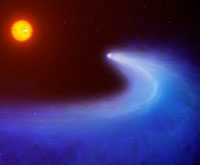 An international team of scientists has discovered an immense cloud of hydrogen escaping from a Neptune-sized exoplanet. Such a phenomena not only helps explain the formation of hot and rocky 'super-earths', but also may potentially act as a signal for detecting extrasolar oceans.
An international team of scientists has discovered an immense cloud of hydrogen escaping from a Neptune-sized exoplanet. Such a phenomena not only helps explain the formation of hot and rocky 'super-earths', but also may potentially act as a signal for detecting extrasolar oceans.
Jun 24th, 2015
Read more
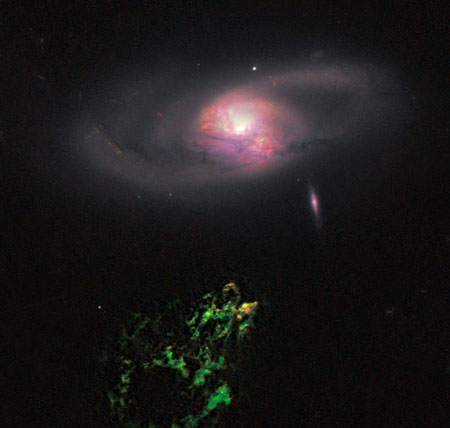 Active galactic nuclei are the brightest objects in the universe. They are not lit up permanently, but rather 'flicker' extremely slowly. This insight helps researchers better understand the influence these nuclei and black holes have on their host galaxy.
Active galactic nuclei are the brightest objects in the universe. They are not lit up permanently, but rather 'flicker' extremely slowly. This insight helps researchers better understand the influence these nuclei and black holes have on their host galaxy.
Jun 24th, 2015
Read more
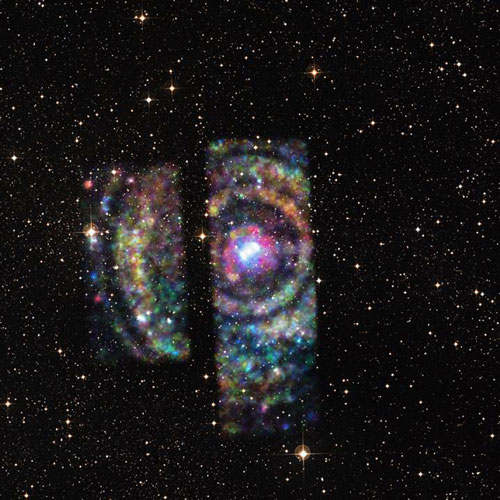 In late 2013, when the neutron star at the heart of one of our galaxy's oddest supernovae gave off a massive burst of X-rays, the resulting echoes - created when the X-rays bounced off clouds of dust in interstellar space - yielded a surprising new measuring stick for astronomers.
In late 2013, when the neutron star at the heart of one of our galaxy's oddest supernovae gave off a massive burst of X-rays, the resulting echoes - created when the X-rays bounced off clouds of dust in interstellar space - yielded a surprising new measuring stick for astronomers.
Jun 24th, 2015
Read more
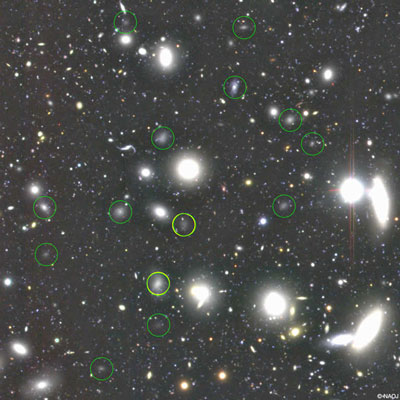 A group of astronomers has discovered 854 'ultra dark galaxies' in the Coma Cluster by analyzing archival data from the Subaru Telescope. The discovery of 47 such mysterious dark galaxies was a surprising find in 2014, and the new discovery of more than 800 suggests galaxy clusters as the key environment for the evolution of these mysterious dark galaxies.
A group of astronomers has discovered 854 'ultra dark galaxies' in the Coma Cluster by analyzing archival data from the Subaru Telescope. The discovery of 47 such mysterious dark galaxies was a surprising find in 2014, and the new discovery of more than 800 suggests galaxy clusters as the key environment for the evolution of these mysterious dark galaxies.
Jun 24th, 2015
Read more
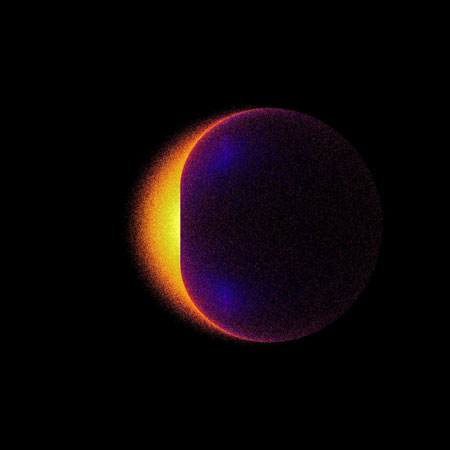 A new NASA computer simulation shows that dark matter particles colliding in the extreme gravity of a black hole can produce strong, potentially observable gamma-ray light. Detecting this emission would provide astronomers with a new tool for understanding both black holes and the nature of dark matter, an elusive substance accounting for most of the mass of the universe that neither reflects, absorbs nor emits light.
A new NASA computer simulation shows that dark matter particles colliding in the extreme gravity of a black hole can produce strong, potentially observable gamma-ray light. Detecting this emission would provide astronomers with a new tool for understanding both black holes and the nature of dark matter, an elusive substance accounting for most of the mass of the universe that neither reflects, absorbs nor emits light.
Jun 23rd, 2015
Read more
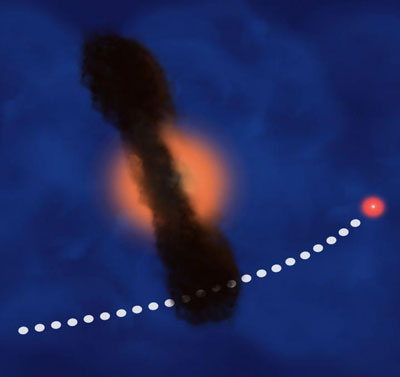 Astronomers have solved a mystery over small, unusually hot blue stars, 10 times hotter than our Sun, that are found in the middle of dense star clusters.
Astronomers have solved a mystery over small, unusually hot blue stars, 10 times hotter than our Sun, that are found in the middle of dense star clusters.
Jun 23rd, 2015
Read more
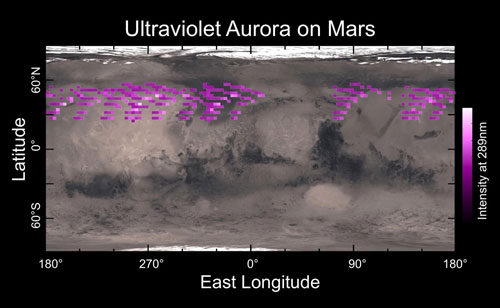 If planets had personalities, Mars would be a rock star according to recent preliminary results from NASA's MAVEN spacecraft. Mars sports a 'Mohawk' of escaping atmospheric particles at its poles, 'wears' a layer of metal particles high in its atmosphere, and lights up with aurora after being smacked by solar storms.
If planets had personalities, Mars would be a rock star according to recent preliminary results from NASA's MAVEN spacecraft. Mars sports a 'Mohawk' of escaping atmospheric particles at its poles, 'wears' a layer of metal particles high in its atmosphere, and lights up with aurora after being smacked by solar storms.
Jun 22nd, 2015
Read more
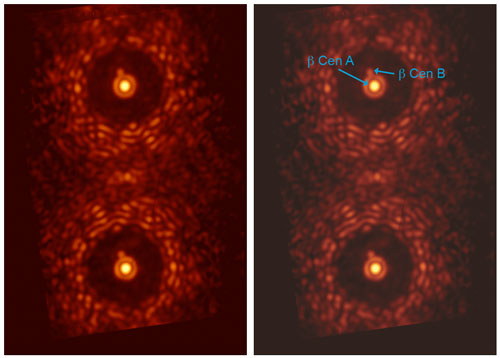 Astronomers have successfully commissioned a new type of optic that can reveal the image of an exoplanet next to its parent star. The 'vector Apodizing Phase Plate' coronagraph was installed at the 6.5-m Magellan Clay telescope in Chile in May 2015, and the first observations demonstrated an unprecedented contrast performance very close to the star, where planets are more likely to reside.
Astronomers have successfully commissioned a new type of optic that can reveal the image of an exoplanet next to its parent star. The 'vector Apodizing Phase Plate' coronagraph was installed at the 6.5-m Magellan Clay telescope in Chile in May 2015, and the first observations demonstrated an unprecedented contrast performance very close to the star, where planets are more likely to reside.
Jun 22nd, 2015
Read more
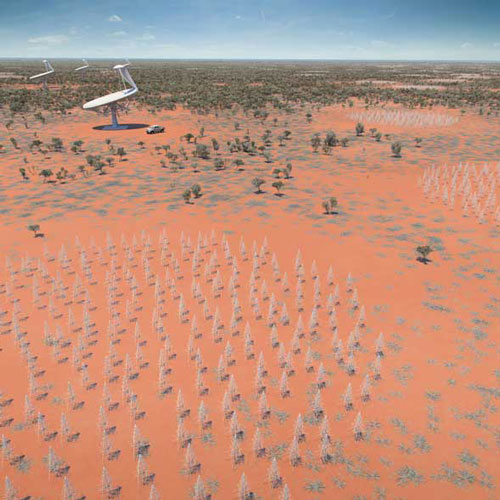 The 'world's largest IT project' - a system with the power of one hundred million home computers - may help to unravel many of the mysteries of our universe: how it began, how it developed and whether humanity is alone in the cosmos.
The 'world's largest IT project' - a system with the power of one hundred million home computers - may help to unravel many of the mysteries of our universe: how it began, how it developed and whether humanity is alone in the cosmos.
Jun 19th, 2015
Read more
NASA's mission concept - to conduct a detailed survey of Europa and investigate its habitability - has successfully completed its first major review by the agency and now is entering the development phase known as formulation.
Jun 19th, 2015
Read more
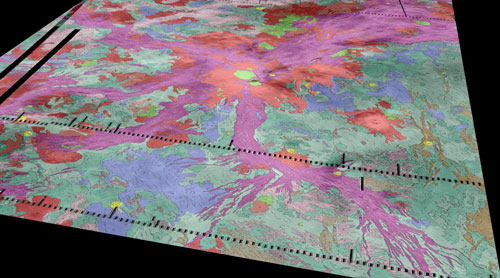 An international team of scientists has found some of the best evidence yet that Venus is volcanically active. In combing through data from ESA's Venus Express mission, the scientists found transient spikes in temperature at several spots on the planet's surface. The hotspots, which were found to flash and fade over the course of just a few days, appear to be generated by active flows of lava on the surface.
An international team of scientists has found some of the best evidence yet that Venus is volcanically active. In combing through data from ESA's Venus Express mission, the scientists found transient spikes in temperature at several spots on the planet's surface. The hotspots, which were found to flash and fade over the course of just a few days, appear to be generated by active flows of lava on the surface.
Jun 18th, 2015
Read more
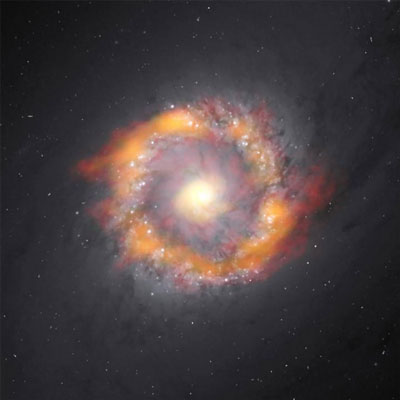 In a new proof-of-concept observation, astronomers using the Atacama Large Millimeter/submillimeter Array (ALMA) have measured the mass of the supermassive black hole at the center of NGC 1097. The researchers determined that this galaxy harbors a black hole 140 million times more massive than our Sun.
In a new proof-of-concept observation, astronomers using the Atacama Large Millimeter/submillimeter Array (ALMA) have measured the mass of the supermassive black hole at the center of NGC 1097. The researchers determined that this galaxy harbors a black hole 140 million times more massive than our Sun.
Jun 18th, 2015
Read more
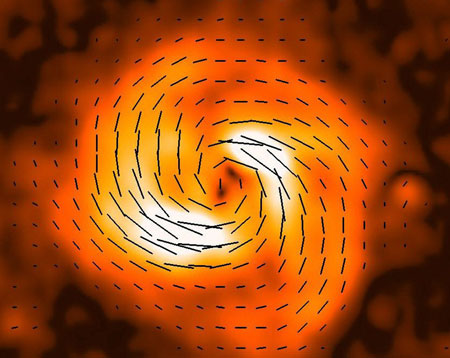 Magnetic fields exist everywhere in the Universe, but what role do they play in the evolution of cosmic objects? In their detailed data of the nearby galaxy IC 342, astronomers have discovered a magnetic field aligned along the optical spiral arms. These observations could help to discover answers to the question of how galaxies evolve and develop further.
Magnetic fields exist everywhere in the Universe, but what role do they play in the evolution of cosmic objects? In their detailed data of the nearby galaxy IC 342, astronomers have discovered a magnetic field aligned along the optical spiral arms. These observations could help to discover answers to the question of how galaxies evolve and develop further.
Jun 18th, 2015
Read more
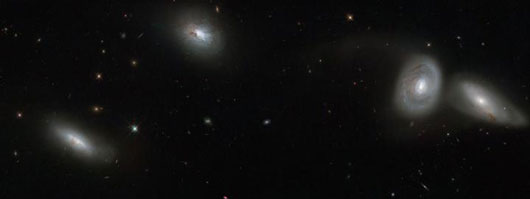 This new NASA/ESA Hubble Space Telescope image shows a gathering of four cosmic companions. This quartet forms part of a group of galaxies known as the Hickson Compact Group 16, or HCG 16 - a galaxy group bursting with dramatic star formation, tidal tails, galactic mergers and black holes.
This new NASA/ESA Hubble Space Telescope image shows a gathering of four cosmic companions. This quartet forms part of a group of galaxies known as the Hickson Compact Group 16, or HCG 16 - a galaxy group bursting with dramatic star formation, tidal tails, galactic mergers and black holes.
Jun 18th, 2015
Read more
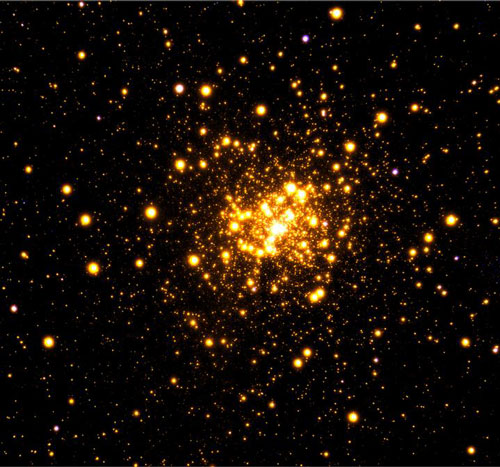 Scientists have imaged a cluster of stars, heavily obscured by material in our galaxy, where stars are so densely packed that it is likely a rare environment where stars can collide.
Scientists have imaged a cluster of stars, heavily obscured by material in our galaxy, where stars are so densely packed that it is likely a rare environment where stars can collide.
Jun 17th, 2015
Read more
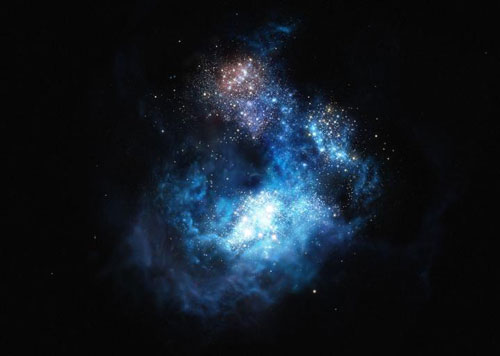 Astronomers have used ESO's Very Large Telescope to peer back into the ancient Universe, to a period known as reionisation, approximately 800 million years after the Big Bang. Instead of conducting a narrow and deep study of a small area of the sky, they broadened their scope to produce the widest survey of very distant galaxies ever attempted.
Astronomers have used ESO's Very Large Telescope to peer back into the ancient Universe, to a period known as reionisation, approximately 800 million years after the Big Bang. Instead of conducting a narrow and deep study of a small area of the sky, they broadened their scope to produce the widest survey of very distant galaxies ever attempted.
Jun 17th, 2015
Read more
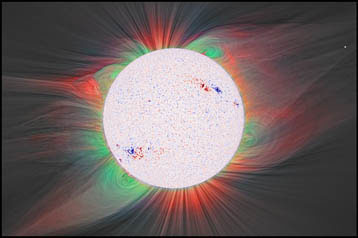 How can the temperature of the Sun's atmosphere be as high as 1 million degrees Celsius when its surface temperature is only around 6000 degrees? By simulating the evolution of part of the Sun's interior and exterior, researchers have identified the mechanisms that provide sufficient energy to heat the solar atmosphere.
How can the temperature of the Sun's atmosphere be as high as 1 million degrees Celsius when its surface temperature is only around 6000 degrees? By simulating the evolution of part of the Sun's interior and exterior, researchers have identified the mechanisms that provide sufficient energy to heat the solar atmosphere.
Jun 17th, 2015
Read more
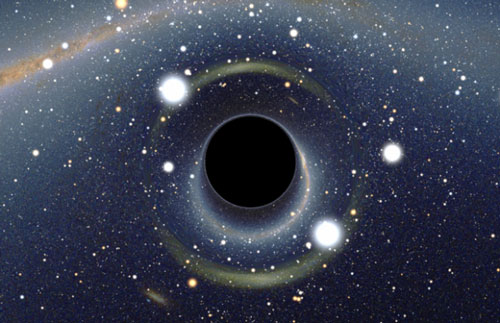 It's not a 'firewall' - and the nature of the universe depends on it, physicist explains.
It's not a 'firewall' - and the nature of the universe depends on it, physicist explains.
Jun 16th, 2015
Read more
 An international team of scientists has discovered an immense cloud of hydrogen escaping from a Neptune-sized exoplanet. Such a phenomena not only helps explain the formation of hot and rocky 'super-earths', but also may potentially act as a signal for detecting extrasolar oceans.
An international team of scientists has discovered an immense cloud of hydrogen escaping from a Neptune-sized exoplanet. Such a phenomena not only helps explain the formation of hot and rocky 'super-earths', but also may potentially act as a signal for detecting extrasolar oceans.
 Subscribe to our Space Exploration News feed
Subscribe to our Space Exploration News feed














